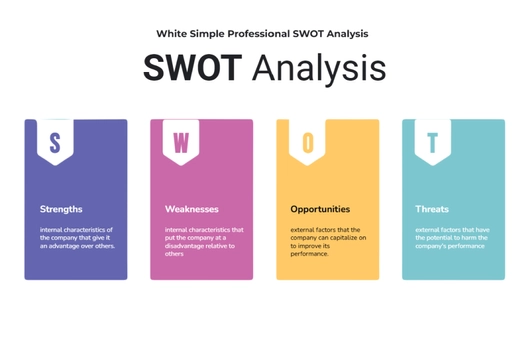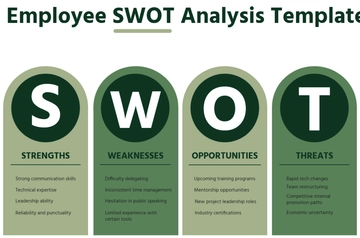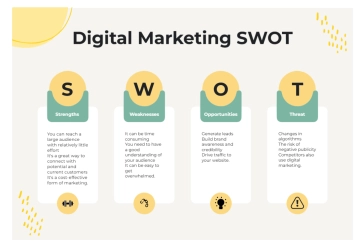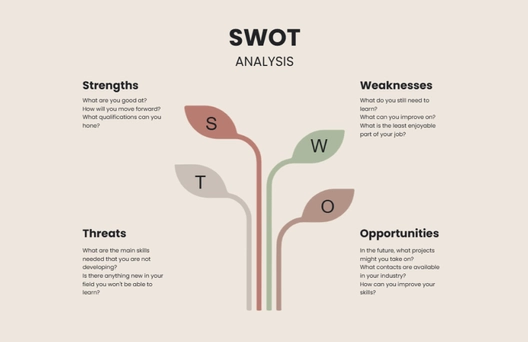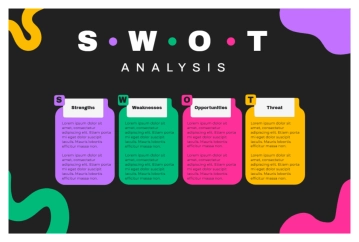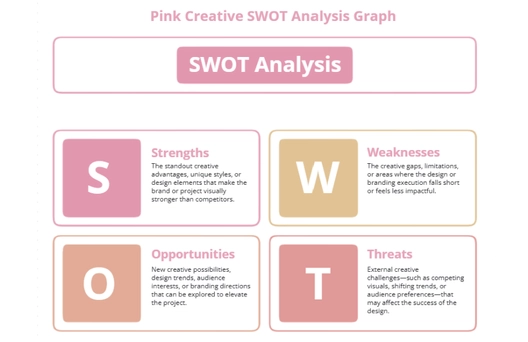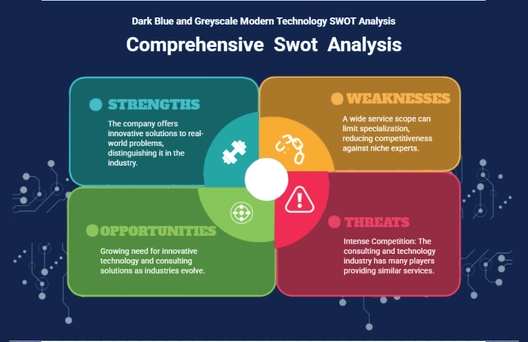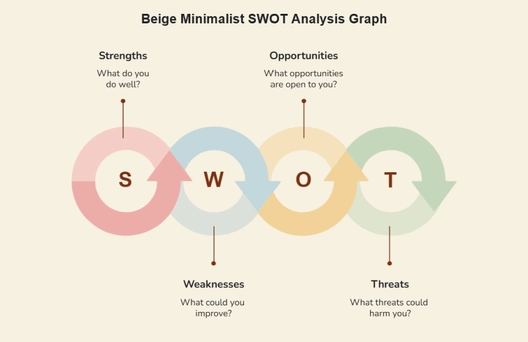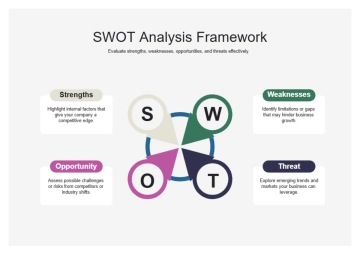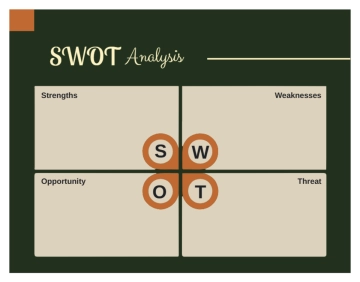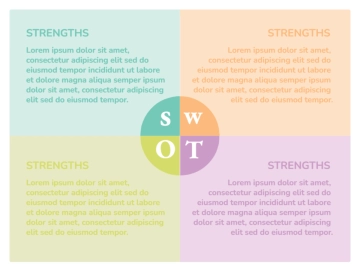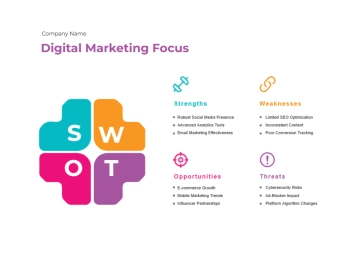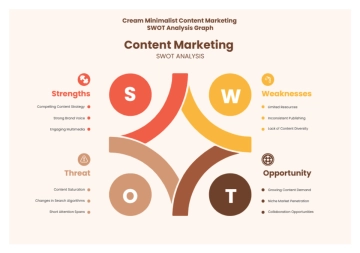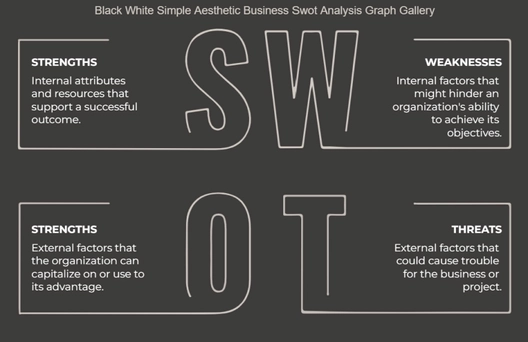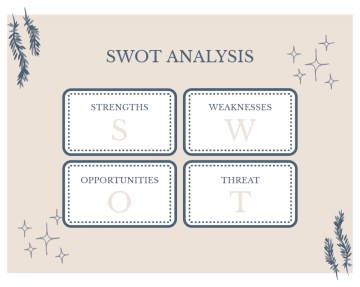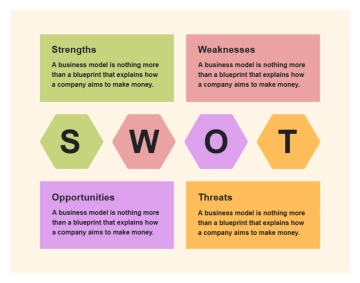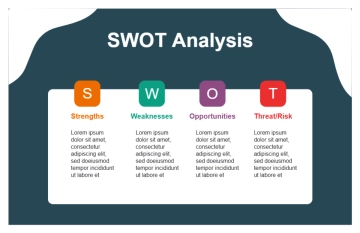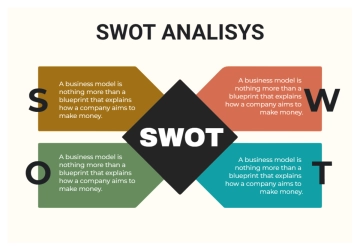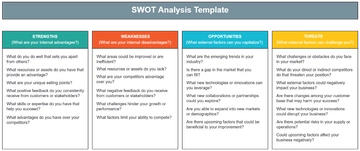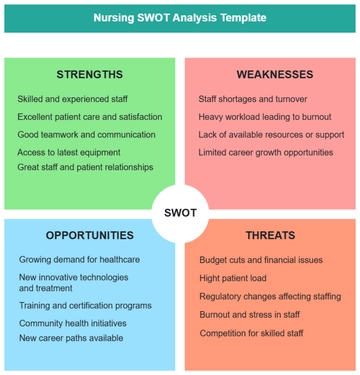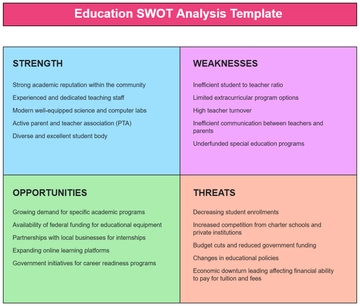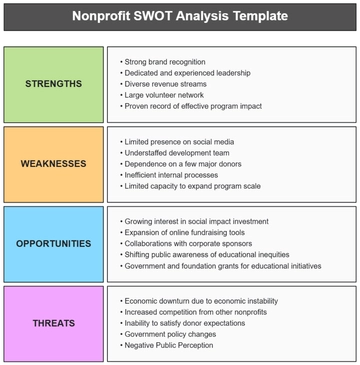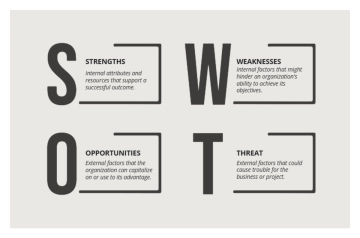Free Agriculture Equipment SWOT Analysis
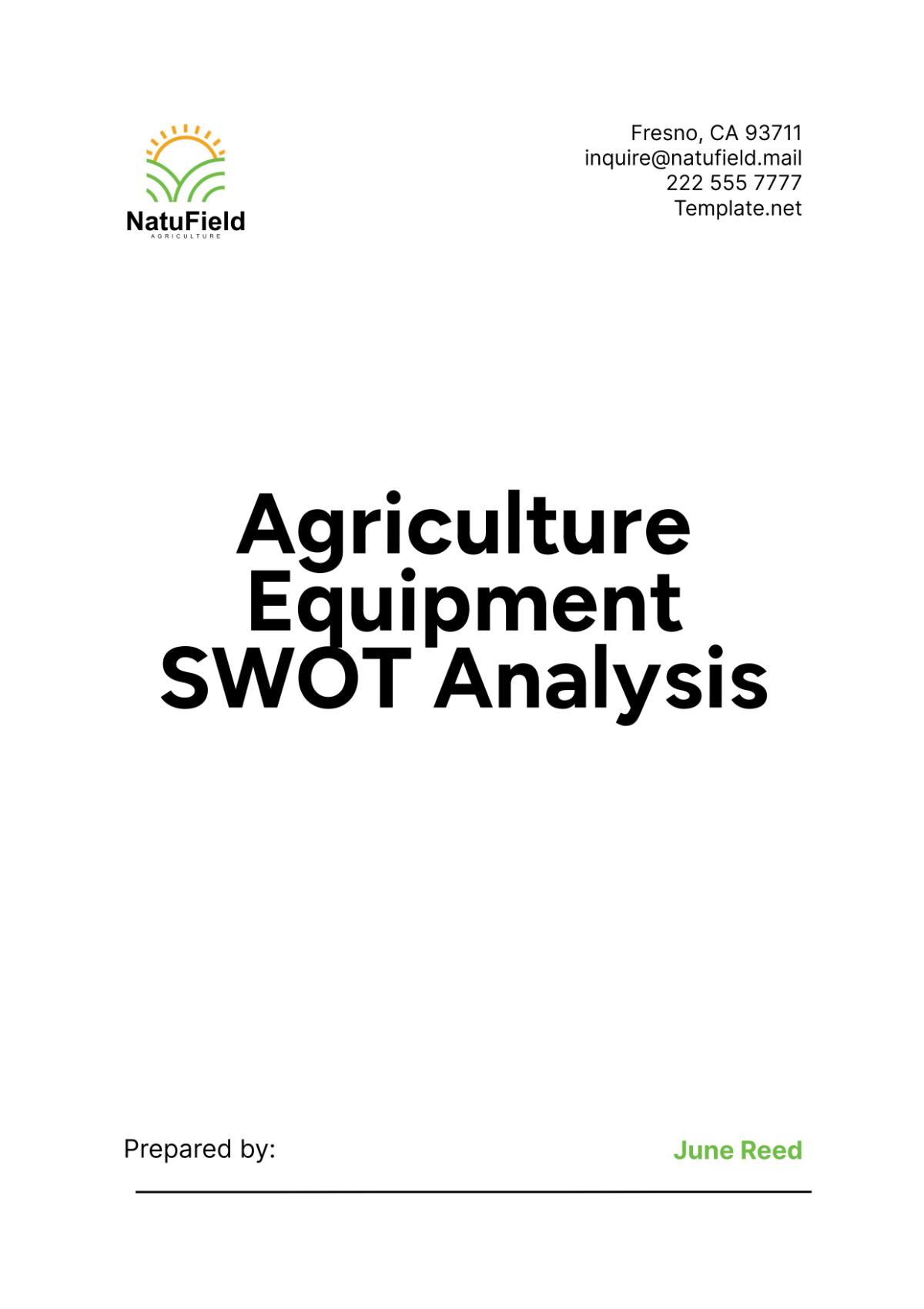
Introduction
A SWOT analysis is a powerful strategic planning tool that helps organizations identify their internal strengths and weaknesses, as well as external opportunities and threats. For [Your Company Name], conducting a comprehensive SWOT analysis of our agricultural equipment is essential for understanding the current state of our operations and identifying areas for improvement. This analysis will provide valuable insights into how we can leverage our strengths, address our weaknesses, capitalize on opportunities, and mitigate threats to enhance our overall efficiency and competitiveness.
A. Importance of SWOT Analysis in Agriculture
In the rapidly evolving agricultural industry, staying competitive requires a deep understanding of both internal capabilities and external factors that influence operations. Agricultural equipment plays a crucial role in farming activities, impacting productivity, efficiency, and profitability. By conducting a SWOT analysis, we can systematically evaluate our equipment-related processes and make informed decisions that align with our strategic goals.
B. Methodology
The SWOT analysis for [Your Company Name] involves a thorough assessment of our agricultural equipment and related processes. This includes:
Data Collection: Gathering data on current equipment, maintenance practices, operational efficiency, and employee skills.
Stakeholder Engagement: Involving key stakeholders, including equipment operators, maintenance staff, and management, to provide insights and perspectives.
Analysis: Evaluating the data to identify strengths, weaknesses, opportunities, and threats.
Reporting: Documenting the findings and providing actionable recommendations to improve equipment management.
C. Benefits of Conducting a SWOT Analysis
Conducting a SWOT analysis offers several benefits for [Your Company Name]:
Strategic Planning: Provides a clear framework for strategic planning and decision-making, ensuring that our investments and actions are aligned with our long-term goals.
Resource Optimization: Helps identify areas where we can optimize resources, reduce costs, and improve efficiency.
Risk Management: Highlights potential threats and vulnerabilities, allowing us to develop proactive risk management strategies.
Continuous Improvement: Encourages a culture of continuous improvement by regularly assessing and addressing operational challenges.
D. Key Areas of Focus
The SWOT analysis will focus on the following key areas related to our agricultural equipment:
Strengths: Identifying the internal factors that give us a competitive advantage, such as advanced technology, skilled workforce, and efficient maintenance practices.
Weaknesses: Highlighting the internal challenges and limitations that hinder our operations, such as high initial costs, equipment depreciation, and dependency on technology.
Opportunities: Exploring external factors that we can leverage to enhance our operations, including technological advancements, government incentives, and new market opportunities.
Threats: Recognizing external risks that could impact our operations, such as market volatility, regulatory changes, and environmental challenges.
E. Setting the Stage for Analysis
Before diving into the detailed SWOT analysis, it is important to understand the context in which [Your Company Name] operates. Our company has a strong commitment to sustainability, innovation, and operational excellence. This analysis will provide a comprehensive overview of our current position and offer strategic insights to help us achieve our goals.
With this understanding, we can proceed to the detailed SWOT analysis, which will provide a structured approach to evaluating our agricultural equipment and identifying actionable strategies for improvement.
1. Strengths
Strengths are internal factors that provide [Your Company Name] with a competitive advantage in managing agricultural equipment. These strengths contribute to the overall effectiveness and efficiency of our operations.
1.1 Strengths Analysis
Strength | Description |
|---|---|
Modern Equipment Fleet | The company has invested in the latest agricultural technology and machinery. |
Skilled Workforce | Employees are well-trained and proficient in operating and maintaining equipment. |
Strong Vendor Relationships | Established relationships with reputable equipment suppliers ensure reliability. |
Efficient Maintenance Program | Regular and preventive maintenance schedules reduce downtime and extend equipment lifespan. |
Advanced Technology Integration | Use of GPS, sensors, and automation improves precision and productivity. |
Modern Equipment Fleet:
Our company has made significant investments in acquiring the latest agricultural machinery and technology. This includes high-efficiency tractors, advanced irrigation systems, and state-of-the-art harvesting equipment. The modern fleet allows for increased productivity, reduced labor costs, and improved crop yields.Skilled Workforce:
The workforce at [Your Company Name] is highly trained in the operation, maintenance, and troubleshooting of agricultural equipment. Regular training programs ensure that employees remain proficient in the latest technologies and techniques, contributing to seamless operations and reduced downtime.Strong Vendor Relationships:
Long-standing relationships with leading equipment manufacturers and suppliers ensure a steady supply of high-quality machinery and parts. These relationships also facilitate favorable pricing, priority service, and early access to new technology, enhancing our operational capabilities.Efficient Maintenance Program:
A well-structured maintenance program is in place to conduct regular inspections, preventive maintenance, and timely repairs. This proactive approach minimizes equipment failures, extends the life of machinery, and ensures consistent performance during critical farming periods.Advanced Technology Integration:
The integration of advanced technologies such as GPS, sensors, and automated systems has revolutionized our agricultural practices. These technologies enable precision farming, optimize resource use, and enhance overall productivity. For example, GPS-guided tractors ensure accurate planting, while sensors monitor soil conditions in real-time.
2. Weaknesses
Weaknesses are internal factors that hinder the efficiency and effectiveness of [Your Company Name]'s agricultural equipment management. Identifying and addressing these weaknesses is crucial for improving operations.
2.1 Weaknesses Analysis
Weakness | Description |
|---|---|
High Initial Costs | Significant capital investment required for modern equipment acquisition. |
Equipment Depreciation | Rapid depreciation of machinery reduces asset value over time. |
Dependence on Technology | High reliance on technology increases vulnerability to technical failures. |
Limited Storage Facilities | Insufficient storage space for equipment can lead to improper handling and damage. |
Environmental Impact | Certain equipment may have negative environmental effects if not managed properly. |
High Initial Costs:
Acquiring modern agricultural equipment requires substantial capital investment, which can strain financial resources, especially for smaller operations. This high upfront cost can limit the ability to invest in other critical areas of the business, such as research and development or employee training.Equipment Depreciation:
Agricultural machinery tends to depreciate quickly due to heavy usage and exposure to harsh environmental conditions. This depreciation can lead to a significant reduction in asset value, impacting the company's financial statements and reducing the resale value of equipment.Dependence on Technology:
While technology enhances efficiency, it also introduces dependency. Technical failures, software glitches, or power outages can disrupt operations. The complexity of modern equipment also requires specialized skills for maintenance and repair, which can be costly and time-consuming.Limited Storage Facilities:
Inadequate storage facilities for agricultural equipment can lead to improper handling, increased wear and tear, and potential damage. Proper storage is essential to protect equipment from environmental elements and ensure its longevity and reliability.Environmental Impact:
Certain types of agricultural machinery, such as those using fossil fuels, can contribute to environmental pollution. Additionally, improper management of equipment-related waste, such as oil and chemical spills, can harm the environment. Implementing eco-friendly practices and technologies is necessary to mitigate these impacts.
3. Opportunities
Opportunities are external factors that [Your Company Name] can leverage to enhance its agricultural equipment management and overall business performance. Identifying and capitalizing on these opportunities can drive growth and innovation.
3.1 Opportunities Analysis
Opportunity | Description |
|---|---|
Adoption of Sustainable Practices | Implementing eco-friendly technologies and practices to enhance sustainability. |
Government Incentives | Utilizing subsidies and grants for modernizing agricultural equipment. |
Technological Advancements | Embracing emerging technologies such as AI, IoT, and robotics. |
Expansion into New Markets | Exploring new geographic regions and market segments for growth. |
Partnerships and Collaborations | Forming strategic alliances with technology providers and research institutions. |
Adoption of Sustainable Practices:
There is a growing trend towards sustainable agriculture. By adopting eco-friendly technologies and practices, such as solar-powered equipment and organic farming methods, [Your Company Name] can reduce its environmental footprint, appeal to eco-conscious consumers, and potentially qualify for sustainability certifications.Government Incentives:
Governments often provide subsidies, grants, and low-interest loans to support the modernization of agricultural equipment. Taking advantage of these financial incentives can offset the high initial costs of acquiring new machinery and promote investment in advanced technologies.Technological Advancements:
The rapid pace of technological innovation presents numerous opportunities for enhancing agricultural practices. Embracing emerging technologies such as artificial intelligence (AI), the Internet of Things (IoT), and robotics can further optimize operations, improve data-driven decision-making, and increase productivity. For example, AI-powered predictive analytics can help forecast crop yields and optimize resource allocation.Expansion into New Markets:
Exploring new geographic regions and market segments can drive business growth. Expanding operations to regions with high demand for agricultural products or introducing new product lines can increase revenue streams. Additionally, understanding and adapting to the specific needs of these markets can enhance competitiveness.Partnerships and Collaborations:
Forming strategic alliances with technology providers, research institutions, and other agricultural firms can facilitate access to cutting-edge innovations and best practices. Collaborations can also lead to joint ventures and co-development projects that drive industry advancements and create mutual benefits.
4. Threats
Threats are external factors that could negatively impact [Your Company Name]'s agricultural equipment management and overall business operations. Identifying and mitigating these threats is essential for maintaining resilience and sustainability.
4.1 Threats Analysis
Threat | Description |
|---|---|
Market Volatility | Fluctuations in market demand and prices affecting profitability. |
Regulatory Changes | New regulations and compliance requirements increasing operational complexity. |
Technological Obsolescence | Rapid technological advancements making current equipment outdated. |
Environmental Challenges | Adverse weather conditions and climate change impacting equipment performance. |
Supply Chain Disruptions | Interruptions in the supply of parts and machinery affecting operations. |
Market Volatility:
The agricultural sector is subject to fluctuations in market demand and commodity prices, which can impact profitability. Factors such as changing consumer preferences, trade policies, and global economic conditions contribute to market volatility. Diversifying product offerings and implementing flexible pricing strategies can help mitigate these risks.Regulatory Changes:
Changes in government regulations and compliance requirements can increase operational complexity and costs. For instance, new environmental standards may necessitate additional investments in eco-friendly equipment and practices. Staying informed about regulatory developments and proactively adapting to changes is essential for maintaining compliance and avoiding penalties.Technological Obsolescence:
The rapid pace of technological advancements can render existing equipment obsolete, necessitating frequent upgrades and replacements. Keeping up with technological trends and investing in adaptable and upgradeable equipment can help mitigate the risk of obsolescence. Additionally, fostering a culture of continuous learning and innovation within the organization is crucial.Environmental Challenges:
Adverse weather conditions, such as droughts, floods, and extreme temperatures, can significantly impact equipment performance and agricultural productivity. Climate change exacerbates these challenges, increasing the unpredictability of weather patterns. Implementing robust risk management strategies, such as diversifying crop types and investing in resilient infrastructure, is vital for mitigating the impact of environmental challenges.Supply Chain Disruptions:
Disruptions in the supply chain, whether due to natural disasters, geopolitical tensions, or logistical issues, can affect the availability of parts and machinery. Such disruptions can lead to delays in equipment maintenance and repairs, hampering operational efficiency. Developing strong relationships with multiple suppliers and maintaining a buffer stock of critical components can enhance supply chain resilience.
Conclusion
A. Summary
The comprehensive SWOT analysis of [Your Company Name]'s agricultural equipment highlights the strengths, weaknesses, opportunities, and threats that influence our operations. By leveraging strengths such as a modern equipment fleet and a skilled workforce, and addressing weaknesses like high initial costs and equipment depreciation, we can enhance our operational efficiency. Capitalizing on opportunities like technological advancements and government incentives while mitigating threats such as market volatility and regulatory changes will position [Your Company Name] for sustained success.
B. Strategic Recommendations
Invest in Training and Development:
Continuously train employees to keep pace with technological advancements and improve operational proficiency.Diversify Revenue Streams:
Explore new markets and product lines to reduce dependency on a single revenue source.Enhance Risk Management:
Develop comprehensive risk management strategies to address environmental challenges and market volatility.Strengthen Supplier Relationships:
Foster strong relationships with multiple suppliers to ensure a resilient and reliable supply chain.Focus on Sustainability:
Invest in sustainable practices and technologies to enhance environmental stewardship and appeal to eco-conscious consumers.
By implementing these recommendations, [Your Company Name] can build on its strengths, address its weaknesses, seize opportunities, and mitigate threats, ensuring long-term growth and sustainability in the agricultural sector.
- 100% Customizable, free editor
- Access 1 Million+ Templates, photo’s & graphics
- Download or share as a template
- Click and replace photos, graphics, text, backgrounds
- Resize, crop, AI write & more
- Access advanced editor
Optimize your agricultural operations with Template.net's Agriculture Equipment SWOT Analysis Template. This editable and customizable template allows you to evaluate the strengths, weaknesses, opportunities, and threats of your farming equipment. Use our intuitive AI editor tool to tailor insights and strategies, ensuring you stay ahead in the competitive agricultural industry. Perfect for making informed equipment decisions.
